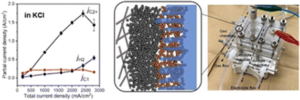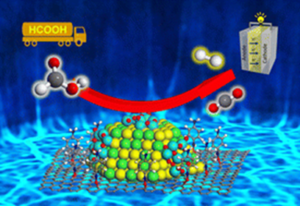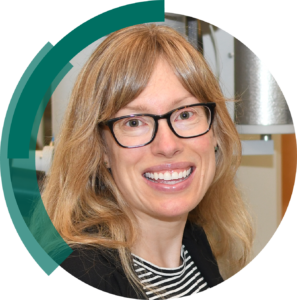
EES Catalysis has now published its first issue, which is available to read online. We are delighted to be sharing reflections from some of our first authors on their experience publishing with EES Catalysis and Open Access publishing.
Hear from our first authors:

Structural ordering enhances highly selective production of acetic acid from CO2 at ultra-low potential
Peter et al. EES. Catal., 2023, Advance Article, DOI: 10.1039/D2EY00081D
“The article I published was titled ‘Structural Ordering Enhances Highly Selective Production of Acetic Acid from CO2 at Ultra-Low Potential’, and it provides a novel strategy to improve electrochemical performance towards the formation of high value-added chemicals selectively at ultra-low potential.
This work was reviewed originally in EES, which later recommended to transfer to EES: Catalysis after receiving the reports from the reviewers. I chose to publish my work in your journal because I was confident that it would be well-received by your readers. EES Catalysis even though new it’s focus is predominantly capturing research in the field of catalysis which is presently one of the pivotal solutions to global warming and I was confident that if I submitted my work to you, it would be given the respect and attention it deserved. Furthermore, I was impressed by the range of topics covered by your journal, and felt that my work would fit in nicely with the other articles published in it.
I am a strong advocate of open access publishing. I believe that everyone should have the right to access knowledge, regardless of their ability to pay. Open access publishing makes it possible for anyone to access information and research, which can help bridge the gap between those who have access to resources and those who do not. This is an important step in creating a more equitable society and I am proud to be part of a journal that supports open access publishing”.

Ultra-high-rate CO2 reduction reactions to multicarbon products with a current density of 1.7 A cm-2 in neutral electrolytes
Nakanishi, Kamiya et al., EES. Catal., 2023,1, 9-16, DOI: 10.1039/D2EY00035K
“In this paper, we have revealed the hidden potential of the standard catalyst for CO2RR through macroscale design. This novel insight provides us with a general guideline for designing novel materials, such as catalysts and electrodes, because our electrodes are only composed of standard components.
Our record work has significant implications for various researchers, such as chemists, physicists and energy economists. More importantly, our work clearly shows that materials chemists should be interested because we need to be careful about the macroscale structure even when synthesising nanoscale catalysts”.

ZSM-5 confined Cr1-O4 active sites boost methane direct oxidation to C1 oxygenates under mild conditions
Xiao-Ming Cao and Yang Lou et al. EES. Catal., 2023, Advance Article, DOI: 10.1039/D2EY00080F
“Transforming methane to high-value oxygenated products (like CH3OH, HCCOH etc.) is highly attractive in the field of energy, environment and chemical engineering. Traditionally, methane conversion can be achieved through an indirect process that couples methane reforming and a Fischer-Tropsch synthesis but such an indirect route normally requires high pressures (up to 30 bar) and temperatures (1100-1300 K) with large energy inputs.
In this present work, we report a ZSM-5 supported non-noble Cr single atom catalyst as a proof-of-concept catalyst (Cr1/ZSM-5 SAC) with a unique Cr1-O4 entity as the active site to selectively and efficiently convert methane to HCOOH and other value-added C1 oxygenates under mild conditions. The catalytic performance of Cr1/ZSM-5 SAC outperforms most reported state-of-the-art catalysts.
Energy & Environmental Science is an international and highly reputed journal in the field of energy and environmental catalysis. Hence, we believe that the newly launched EES Catalysis will be another highly reputed and international journal in this field. As a gold open access journal, we believe the published research work will be much more freely, easily and faster to spread in the research community, which will help create a barrierless innovation platform in the world.
It was a very wonderful experience for publishing our work on EES Catalysis. The review period is very fast and the questions proposed by the peers are very professional. We believe that the open access publishing will be the new way to spread science to professional researchers and social publics”.

Boosting the activity of PdAG allow nanoparticles during H2 production from formic acid induced by CrOx as an inorganic interface modifier
Mori, Yamashita et al., EES. Catal., 2023,1, 84-93, DOI: 10.1039/D2EY00049K
“Boosting the activity of PdAg alloy nanoparticles during H2 production from formic acid induced by CrOx as an inorganic interface modifier. The interfacial modification of PdAg nanoparticles with highly dispersed CrOx boosts the dehydrogenation of formic acid with extremely high turnover number. We are sure that our findings are of immediate interest to catalysts design research readership aiming at realizing environmentally-friendly hydrogen release systems.
We are very happy to publish the latest research results in this memorable first volume. We believe EES Catalysis will provide a powerful platform for presenting cutting-edge research in this fascinating area. Being able to post links to open access articles on our home page is a very effective way to reach out to interested readers”.







